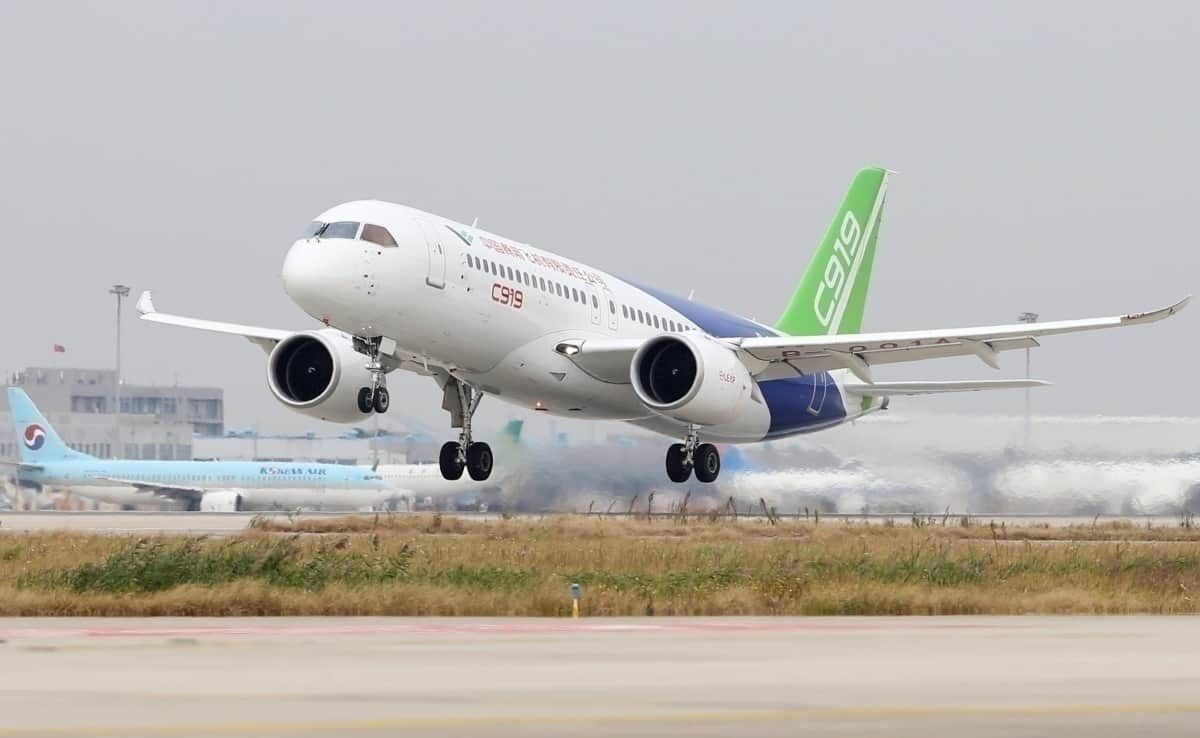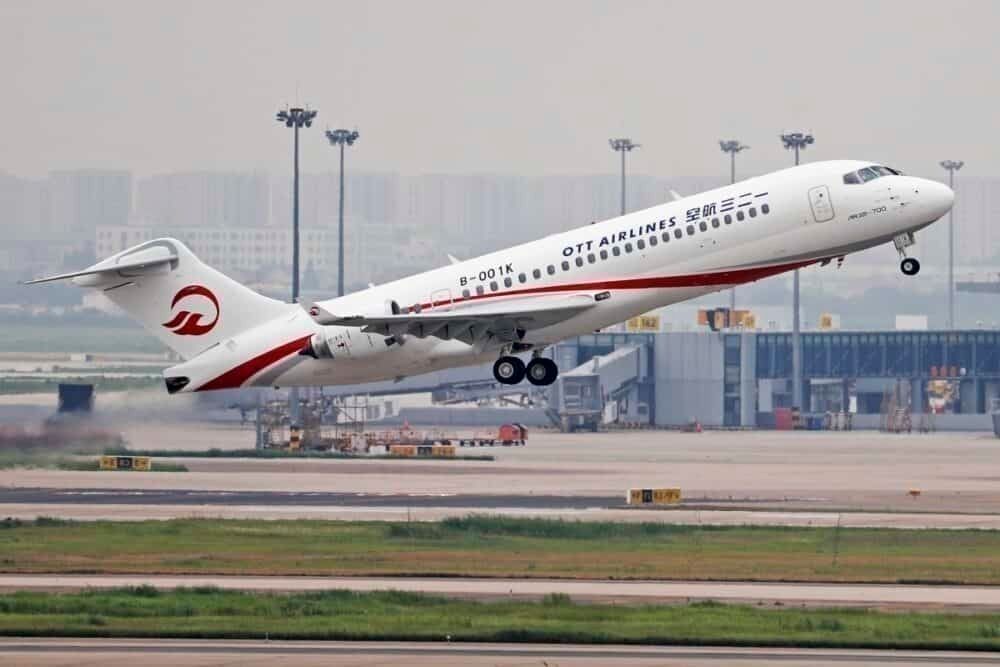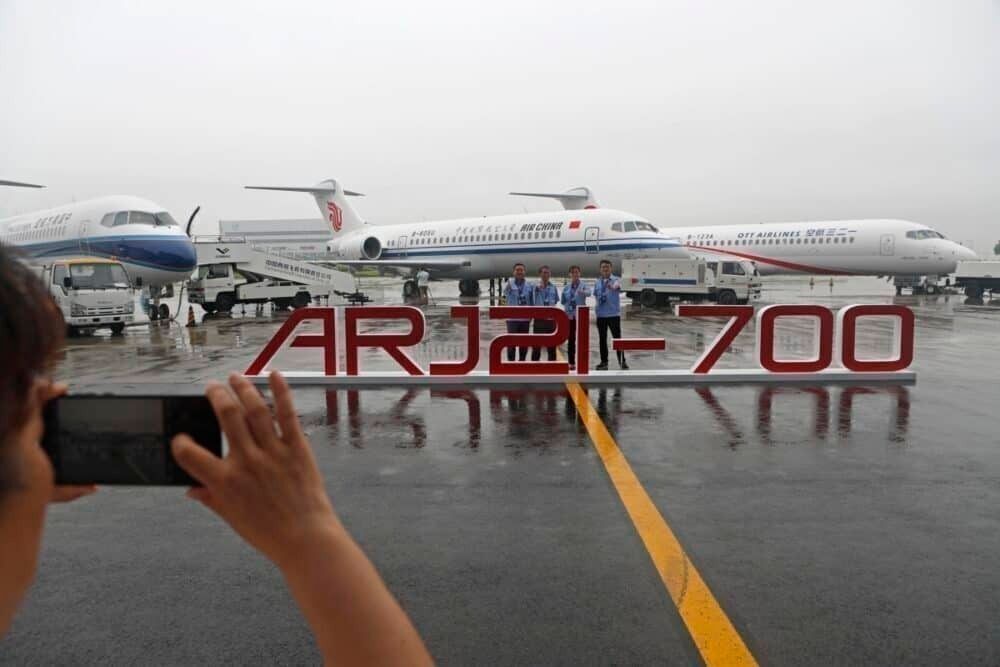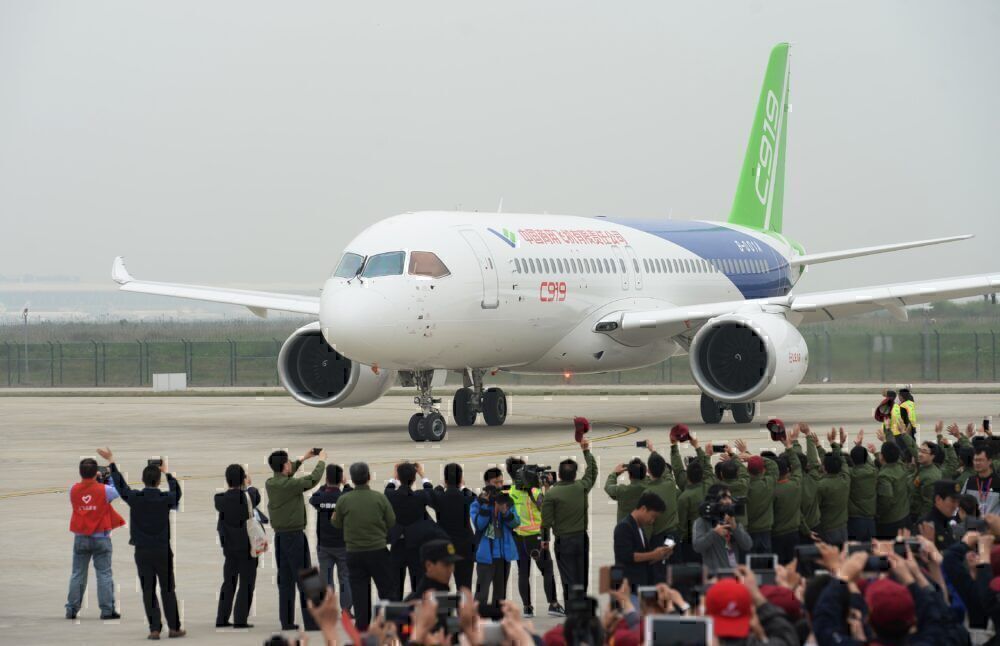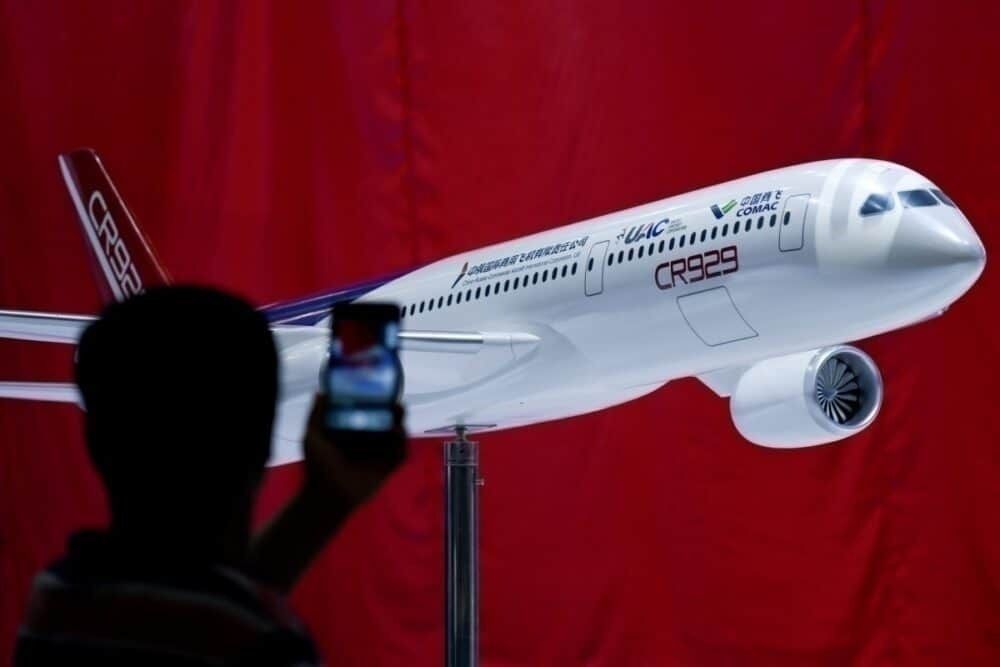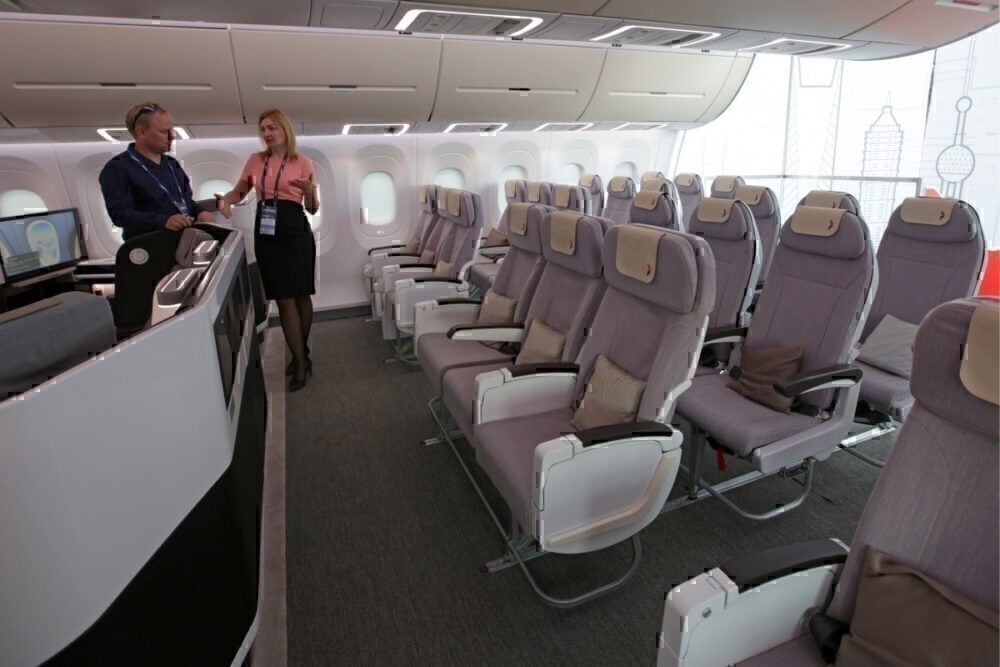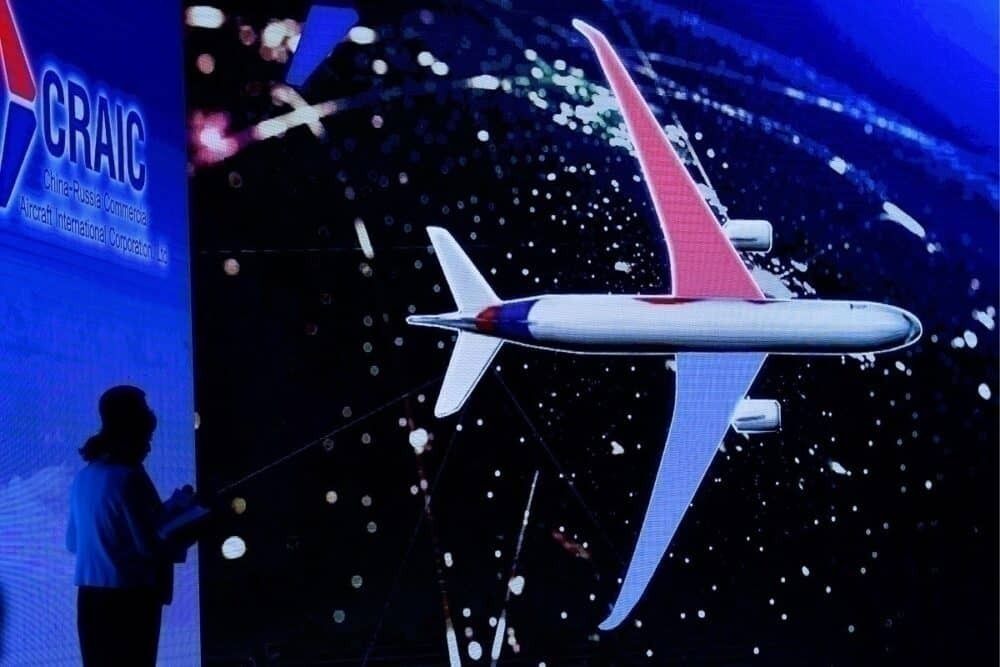Commercial aircraft manufacturing today is dominated by Boeing and Airbus. But this was not always the case and likely won't be again in the future. Amongst the other companies, Chinese manufacturer COMAC stands out with its range of aircraft under development and planned - both narrowbodies and widebodies. This article takes a quick look at these new aircraft.
The rise of COMAC
Boeing and Airbus have grown to lead the aircraft manufacturing market in different ways. Through their own efforts and development, as well as mergers and takeovers of other manufacturers, they have essentially formed a market duopoly for the last 30-40 years.
Of course, there is other competition, but mostly just at the smaller end of the market. This is changing, though, with new manufacturers in Russia and China.
Aircraft manufacturer is a major focus area of the Chinese government for development. It has long been part of its 'Five Year Plans.'
The country took a big step forward in 2008 with the formation of state-owned COMAC (the Commercial Aircraft Corporation of China). This brought together several smaller manufacturing and aeronautical companies across China, with the objective to manufacture large jet aircraft.
The ARJ21 - regional jet
The first aircraft developed by COMAC was the ARJ21 (Advanced Regional Jet). This is a regional jet with a capacity of up to 90 and a range of 2,225 to 3,700 kilometers. It has two rear-mounted General Electric CF34 engines.
The ARJ21 first flew in 2008 but did not enter service until 2016 with launch customer Chengdu Airlines. So far, there is only one variant (the ARJ21-700), but a larger variant is planned (the ARJ21-900) with a capacity of up to 105.
With its smaller size, the ARJ21 competes most closely with the Airbus A220 and the Embraer E190. Simple Flying previously took a detailed look at how the ARJ21 compares with the Embraer E190-E2.
According to COMAC, 616 orders have been placed for the ARJ21 from 23 customers. These are mostly domestic Chinese airlines, including the three largest airlines, which all took delivery of their first aircraft in June 2020, having all placed orders for 35 aircraft in 2019.
The C919 - narrowbody
While the ARJ competes more with smaller, regional aircraft, the aim of COMAC was to take on Boeing and Airbus in larger aircraft. The C919 is the first step to doing this, competing much more closely with the Boeing 737 and Airbus A320 families.
Development of the narrowbody C919 started in 2011, and it first flew in 2015. Production though has been delayed, most significantly by engine problems. Delivery to the first customer, China Eastern Airlines, is expected in 2021.
The C919 offers a typical capacity of 168 (and a maximum limit of 190) and a range of 4,075 kilometers. There is an extended range version planned, but no different sized variants as yet. After earlier problems with engine suppliers, these have now been confirmed as General Electric LEAP-1C engines, as used on the A320neo and all 737 MAX aircraft.
According to COMAC, it has received 815 orders from 28 airlines. Like with the ARJ21, these are initially Chinese airlines, but COMAC will undoubtedly start to target further afield once the aircraft is proven.
The CRAIC CR929 - twin-engine widebody
For a competing widebody, Chinese COMAC is working together with the Russian manufacturer UAC through a joint venture known as China-Russia Commercial Aircraft International Corporation (CRAIC).
Its first planned aircraft is the CR929, a twin-engine widebody with a three-cabin capacity of between 261 and 291 and a range of 12,000 kilometers. The development has been delayed, with construction now expected to begin in 2021 and delivery in 2025. This could be further delayed, though, with 2027 a more likely target. The main cause has been engine delays. This time Russia and China and developing a new engine instead of working with General Electric or Rolls-Royce.
Other variants of the CR929 are planned, but the timeline is not yet clear. There will be a smaller variant with a lower capacity of around 250 and an increased range of 14,000 kilometers. And a larger variant will stretch three-class capacity to 320, with reduced range.
The CR929 will compete with the Boeing 787 and Airbus A350, but is also very similar in specification to the A330neo. Both the 787 and A350 beat it on range, but this could change as engine technology is developed.
It's early days for the CR929, with construction still to start. And no order details have yet been released. A lot rests on joint Russia and China cooperation. There have already been challenges here, and there are some suggestions it may get worse. Post-pandemic Russia is looking to reduce spend on aviation, and it's likely the Chinese market will be much more lucrative for sales. But there are some positive signs of closer collaboration and more knowledge sharing as well.
COMAC aircraft naming
The naming of any aircraft is interesting and usually has some significance. Why then has COMAC chosen these names? Unsurprisingly, the 'C' and 'CR' stand for the manufacturers. The '9' though represents longevity in Chinese culture. It is pronounced ‘jiu,’ which is the same pronunciation as the word for ‘everlasting’ (such wordplay is common in Chinese). The following numbers refer to the aircraft passenger capacity.
Selling the aircraft
How far the new aircraft compete with Boeing and Airbus will depend a lot on international sales. Almost all orders so far have been from Chinese airlines. This is no small market, though. As Simple Flying recently reported, Boeing estimates that China will need $1.4 trillion of new aircraft over the next 20 years.
Tempting customers away from Boeing and Airbus could be hard. They are well established, not just with sales relationships but also with networks and suppliers of parts and maintenance. This will be a significant challenge, especially if larger aircraft are to be able to operate globally.
The most likely initial customers would be in South East Asia or Africa. China already has strong trading relationships, and aircraft sales could build on this. Price could also be a big influencer. Looking further ahead is difficult, especially with the uncertainty coming out of 2020. But the market has not always be controlled by two manufacturers, and if COMAC aircraft perform well and continue to improve, they could offer stiff competition.
What do you think about China's aircraft manufacturing plans? We will see more aircraft developed, and will they expand beyond just a domestic market? Let us know your thoughts in the comments.

